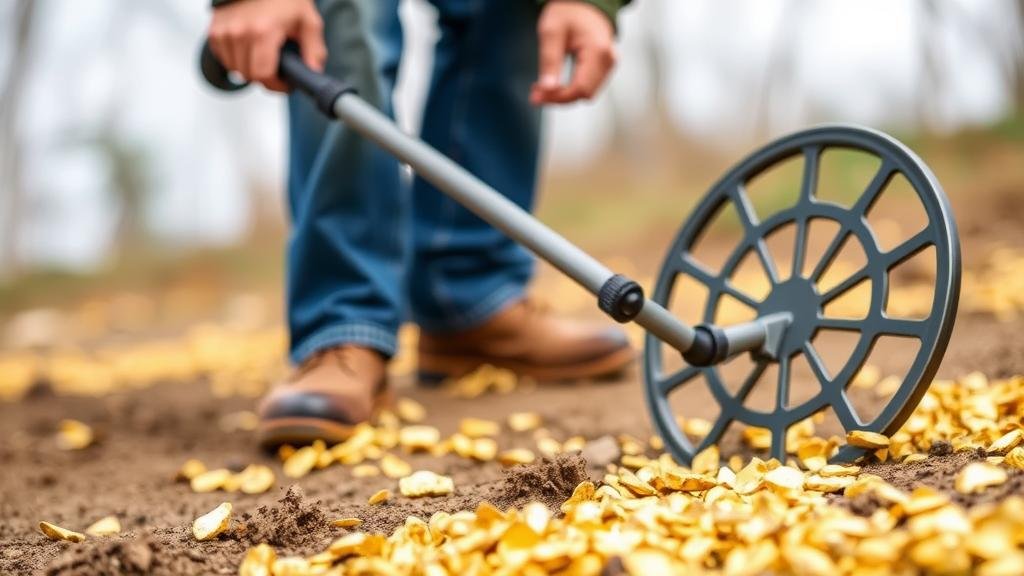How to Use Metal Detectors Effectively for Finding Gold Nuggets
How to Use Metal Detectors Effectively for Finding Gold Nuggets
Metal detecting for gold nuggets is a popular outdoor hobby that combines adventure with the potential for financial reward. But, effectively utilizing a metal detector for this specific purpose requires knowledge, patience, and technique. This article outlines essential strategies for maximizing your chances of finding gold nuggets with a metal detector.
Understanding Metal Detectors
Metal detectors are devices that use electromagnetic fields to detect metallic objects buried underground. When the detector’s coil passes over metal, it generates a response, indicating the presence of a target. There are two main types of metal detectors suited for gold prospecting: VLF (Very Low Frequency) and PI (Pulse Induction).
- VLF Detectors: These detectors are sensitive to small gold nuggets. They operate at higher frequencies and are ideal for mineralized soil typically found in gold-bearing areas.
- PI Detectors: These models handle highly mineralized environments better and are effective in deeper searches. are generally more expensive but can yield better results in challenging conditions.
Choosing the Right Gear
Beyond the metal detector itself, proper gear is essential for successful gold hunting. Here are key items to consider:
- Headphones: Using headphones can help you hear faint signals while eliminating background noise.
- Digging Tools: A reliable digging tool and a small scoop are necessary for retrieving targets without damaging them.
- Ground Balance: Make sure your detector has a ground balance feature to adjust for soil mineralization.
Researching Locations
Before heading out, conducting thorough research is crucial. Gold tends to be found in specific geological environments. Ideal locations for gold detection include:
- Old Mining Areas: Historically productive gold mining regions are often prime targets, as they may contain overlooked nuggets.
- Riverbeds and Streambeds: Gold is denser than most materials, so it often collects in these areas during erosion.
- Parks and Recreational Areas: Some parks may allow metal detecting, and treasures could be left behind from past visitors.
Utilizing Proper Techniques
Once equipped and in the right location, using effective techniques while metal detecting can improve results significantly. Consider these strategies:
- Sweeping Technique: Maintain a consistent swing speed and height while sweeping the detector. Ideally, keep the coil parallel to the ground and about 4-6 inches above the soil.
- Overlap Sweeps: Overlap your sweeps by about 20-30% to ensure thorough coverage of the area.
- Slow and Steady: Move slowly to give the detector time to register signals from buried nuggets.
Interpreting Signals
The detector will produce different tones based on the type and size of the object detected. Recognizing these signals is vital:
- Soft Tones: Typically indicate a small object; proceed with caution.
- Sharp Tones: Generally signify larger or more conductive targets, which could be more valuable.
- Chirps and Beeps: These can indicate minerals rather than gold; adjusting ground balance can help filter these out.
Common Challenges and Solutions
New metal detectorists may face several challenges, including false signals, difficult terrain, and identifying actual gold versus trash. Here are solutions to these challenges:
- False Signals: Frequently check and adjust ground balance to minimize interference.
- Terrain Difficulties: Practice makes perfect. Spend time getting comfortable with your equipment.
- Identifying Finds: Learn to differentiate between different target signals and use a pinpointer for accurate retrieval.
Real-World Applications
Success stories enhance the allure of metal detecting. For example, in 2021, a hobbyist in California discovered a 4.5-ounce gold nugget in the Sierra Nevada foothills using a VLF detector, a find that emphasized the potential fortune awaiting metal detectorists. Such discoveries motivate enthusiasts to invest time and practice into perfecting their techniques and strategies.
Conclusion
Metal detecting for gold nuggets can be a rewarding activity both financially and recreationally. By understanding the types of detectors available, researching locations, utilizing effective techniques, and learning how to interpret signals, individuals can dramatically increase their success rate. Always remain respectful of the environment and local regulations regarding metal detecting while enjoying this exciting and potentially lucrative hobby.



